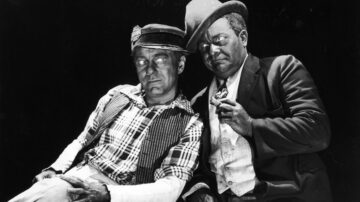Harmeet Kaur in CNN:
 Blackface isn’t just about painting one’s skin darker or putting on a costume. It invokes a racist and painful history. The origins of blackface date back to the minstrel shows of mid-19th century. White performers darkened their skin with polish and cork, put on tattered clothing and exaggerated their features to look stereotypically “black.” The first minstrel shows mimicked enslaved Africans on Southern plantations, depicting black people as lazy, ignorant, cowardly or hypersexual, according to the Smithsonian’s National Museum of African American History and Culture (NMAAHC). The performances were intended to be funny to white audiences. But to the black community, they were demeaning and hurtful.
Blackface isn’t just about painting one’s skin darker or putting on a costume. It invokes a racist and painful history. The origins of blackface date back to the minstrel shows of mid-19th century. White performers darkened their skin with polish and cork, put on tattered clothing and exaggerated their features to look stereotypically “black.” The first minstrel shows mimicked enslaved Africans on Southern plantations, depicting black people as lazy, ignorant, cowardly or hypersexual, according to the Smithsonian’s National Museum of African American History and Culture (NMAAHC). The performances were intended to be funny to white audiences. But to the black community, they were demeaning and hurtful.
One of the most popular blackface characters was “Jim Crow,” developed by performer and playwright Thomas Dartmouth Rice. As part of a traveling solo act, Rice wore a burnt-cork blackface mask and raggedy clothing, spoke in stereotypical black vernacular and performed a caricatured song and dance routine that he said he learned from a slave, according to the University of South Florida Library.
Though early minstrel shows started in New York, they quickly spread to audiences in both the North and South. By 1845, minstrel shows spawned their own industry, NMAAHC says. Its influence extended into the 20th century. Al Jolson performed in blackface in “The Jazz Singer,” a hit film in 1927, and American actors like Shirley Temple, Judy Garland and Mickey Rooney put on blackface in movies too. The characters were so pervasive that even some black performers put on blackface, historians say. It was the only way they could work – as white audiences weren’t interested in watching black actors do anything but act foolish on stage.
More here. (Note: In honor of Black History Month, at least one post will be devoted to its 2024 theme of “African Americans and the Arts” throughout the month of February)
